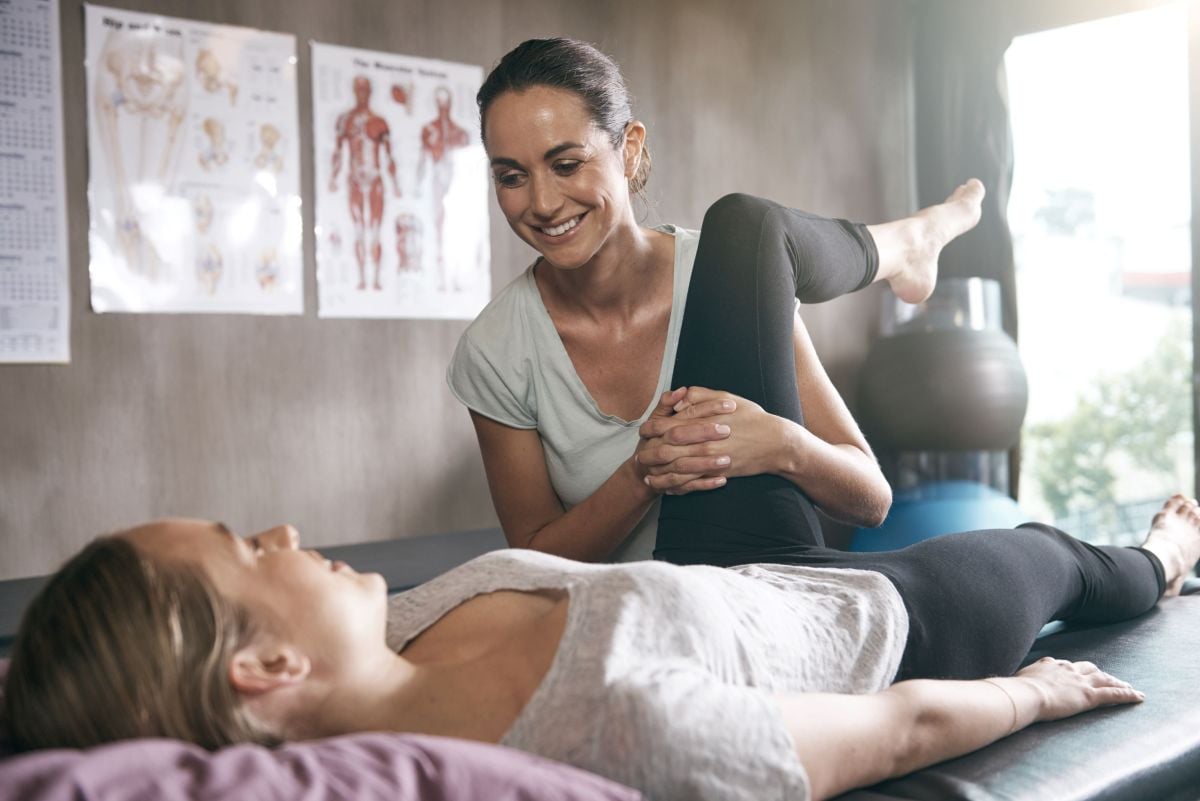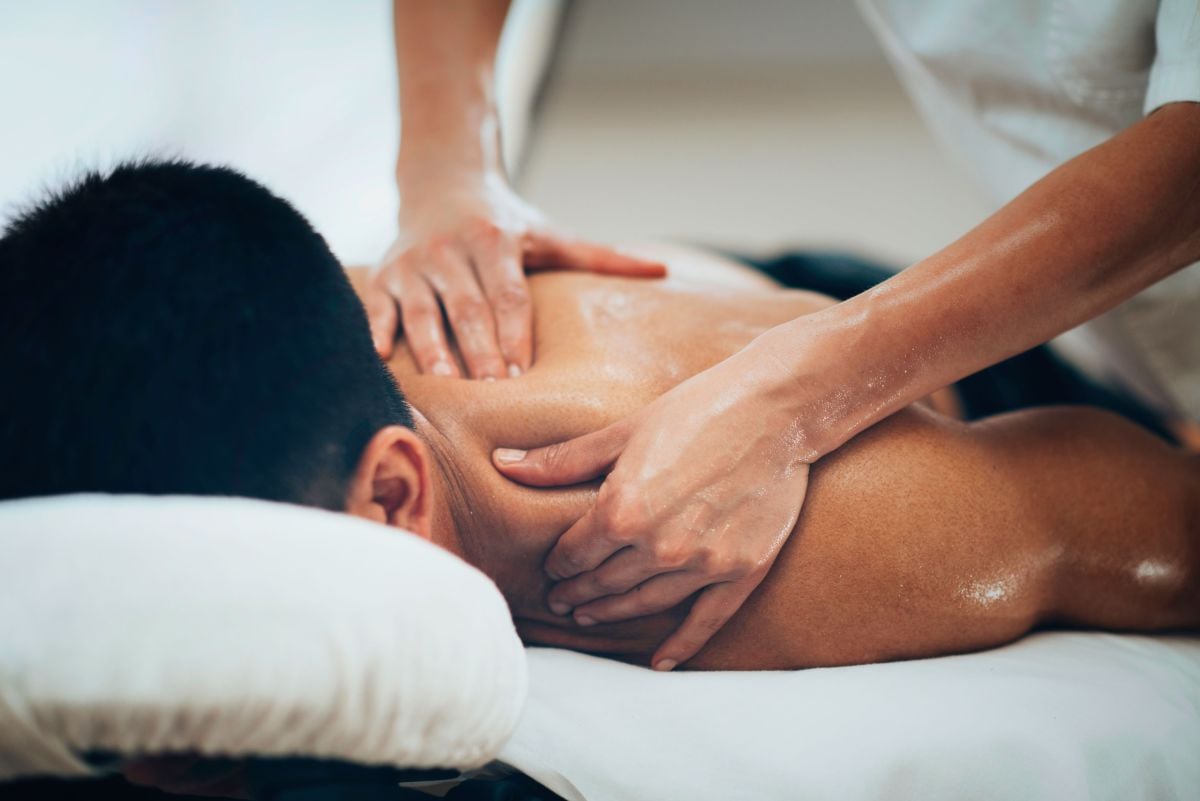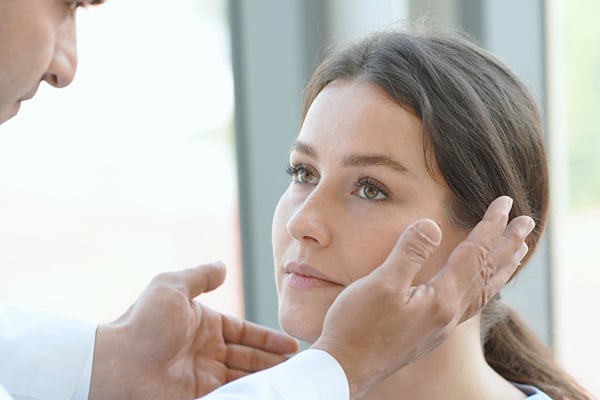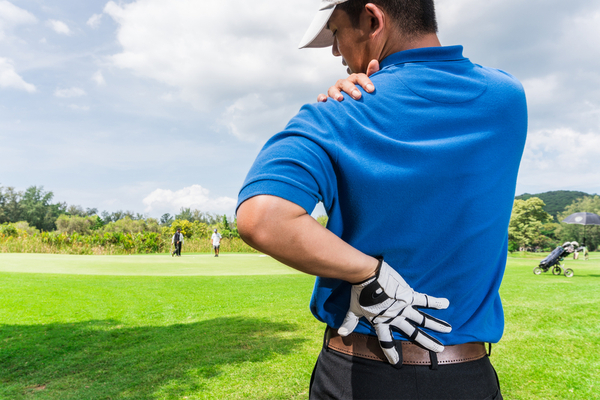
7 exercises that can help you avoid golf injuries
Note: The exercises and/or stretches in this blog are not intended to replace the advice of your clinician. If you are unsure, please speak to your clinician before attempting any of the suggestions below.
Golf injuries can occur at any age and skill level, and a majority of them are related to overuse. However, they can also occur due to improper swing mechanics like gripping the club too tight.
Some of the most common injuries occur in the low back, shoulder, elbow, and wrist. By working on exercises that improve strength, mobility, and stability, many of these injuries can be avoided.
Becoming aware of the most common injuries and how to prevent them will ensure that you are able to get the most out of your golf game this summer.
Check out these 7 exercises below that can help you avoid injuries the next time you play a round of golf:
Low back
Low back injury is the most common among golfers due to the unequal compression, shear, and rotational loads produced in the lumbar spine during a golf swing.
The compression loads produced in the low back can reach forces up to 8 times your body weight!
Preventative exercises that focus on improving strength and mobility limitations may reduce the occurrence of low back injuries.
1. Supine trunk rotation
Lie on your back with your arms in a “T” position, your feet flat on the floor and your knees together.
Slowly let both knees fall to one side and hold for 3 seconds.
Slowly bring your legs back to center.
Repeat 5 times on each side.

2. Side plank
Lie on your side with your legs bent and in line with your body.
With your upper body supported on your elbow, ensure your elbow is under your shoulder.
Lift your hip off the floor until your body is aligned.
Hold for 30 seconds and repeat 3 times on each side.
You may straighten your legs to increase difficulty or add a torso rotation by reaching under your body with your top arm as you hold the plank position.

3. Bird dog
Begin on your hands and knees with your knees under your hips and your hands under your shoulders.
Maintain your spine in neutral (naturally arched, chin tucked in).
Tighten your abdominals as you reach in front of you with your left hand and extend your right leg.
Slowly lower your leg and arm back to the starting position.
Repeat 5 times each side.
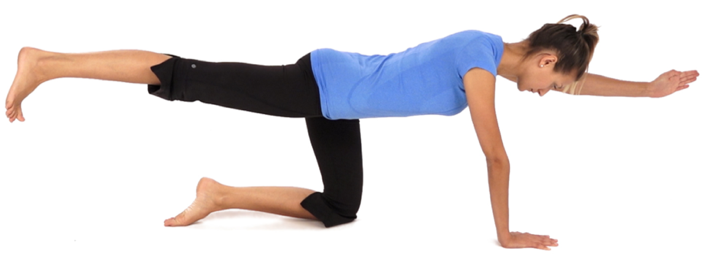
Shoulder
The shoulder muscles need to work together to execute a golf swing. Golfers often experience shoulder pain in the lead shoulder at the top of the backswing or at the end of the follow-through.
Strengthening of the shoulder muscles can improve joint stability which may decrease your risk of injury.
4. Shoulder abduction + external rotation
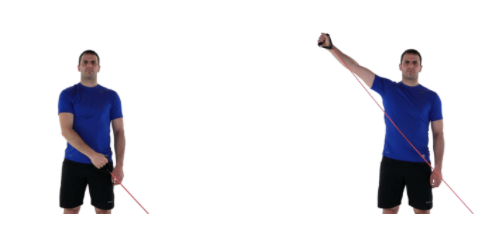
Tie one end of a resistance band to a stable surface at floor level on the opposite side of your working arm.
Stand holding the other end of the band with your arm crossed over your body, palm facing in towards the opposite hip.
Pull the band up, across, and away from your body in a diagonal motion.
Rotate your arm as you pull so that your palm is facing forward at the end of the movement.
Slowly return to the starting position and repeat 10 times each side.
5. Shoulder adduction + internal rotation
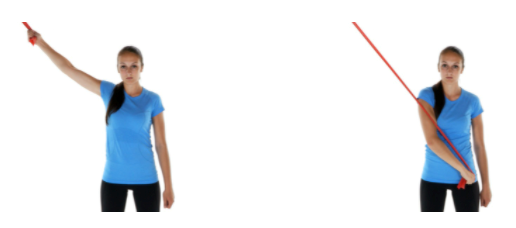
Tie one end of a resistance band overhead on the same side as your working arm.
Stand holding the opposite end of the band with your palm facing forward.
Pull the band down across your body towards the opposite hip.
Rotate your arm as you pull so that your palm is facing towards your body at the end of the movement.
Slowly return to the starting position and repeat 10 times each side.
Elbow and wrist
Despite the name, tennis elbow (lateral epicondylitis) is a form of tendinitis that commonly affects the lead elbow of many golfers. Medial epicondylitis (golfers’ elbow) is less common and tends to affect the trailing arm.
Similar to the elbow, the lead wrist is also vulnerable to overuse injuries such as tendinitis, however injury can occur from sudden impact as a result of gripping the club too tight and hitting a hard object such as the ground, artificial mats, rocks, or thick grass.
Exercises that strengthen while lengthening the forearm muscles may help protect the elbow and wrist from sudden impact and overuse related injuries.
6. Wrist flexion
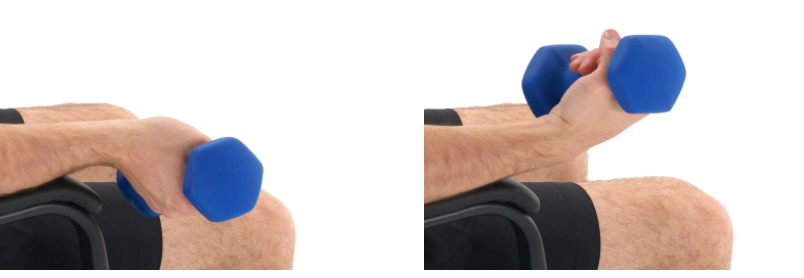
Place your forearm along an armrest or table with your wrist hanging over the edge and palm facing up.
With a weight or band in your hand, flex your wrist and lift your hand towards the ceiling for a count of 2 seconds.
Slowly lower for 4 seconds and repeat 10 times each wrist.
7. Wrist extension
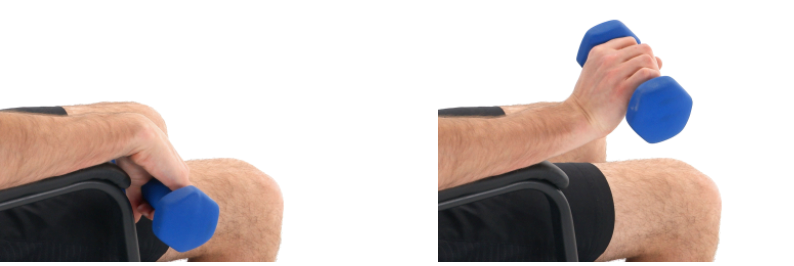
Place your arm in the same position as above but with your palm facing down.
With a weight or band in your hand, extend your wrist and lift your hand towards the ceiling for a count of 2 seconds.
Slowly lower for 4 seconds and repeat 10 times each wrist.
Pre and post-round warmups and cool downs may also reduce your risk of injury by priming your muscles for activity and reducing feelings of stiffness. For examples of a golf-specific warm-up and cool-down, check out our first blog, 7 tips to get you ready for golf before you tee off.
Golf is often perceived as a low-risk sport; however, the reality is that many golfers suffer from game related injuries. The way your body moves throughout your swing will influence what injuries you are at greater risk of.
If you’re interested in setting up an in-depth assessment with a clinician, book an appointment online or check our locations page to find a clinic near you.
This blog was written by Emily Karageorgos, a Physiotherapy student at The University of Toronto

